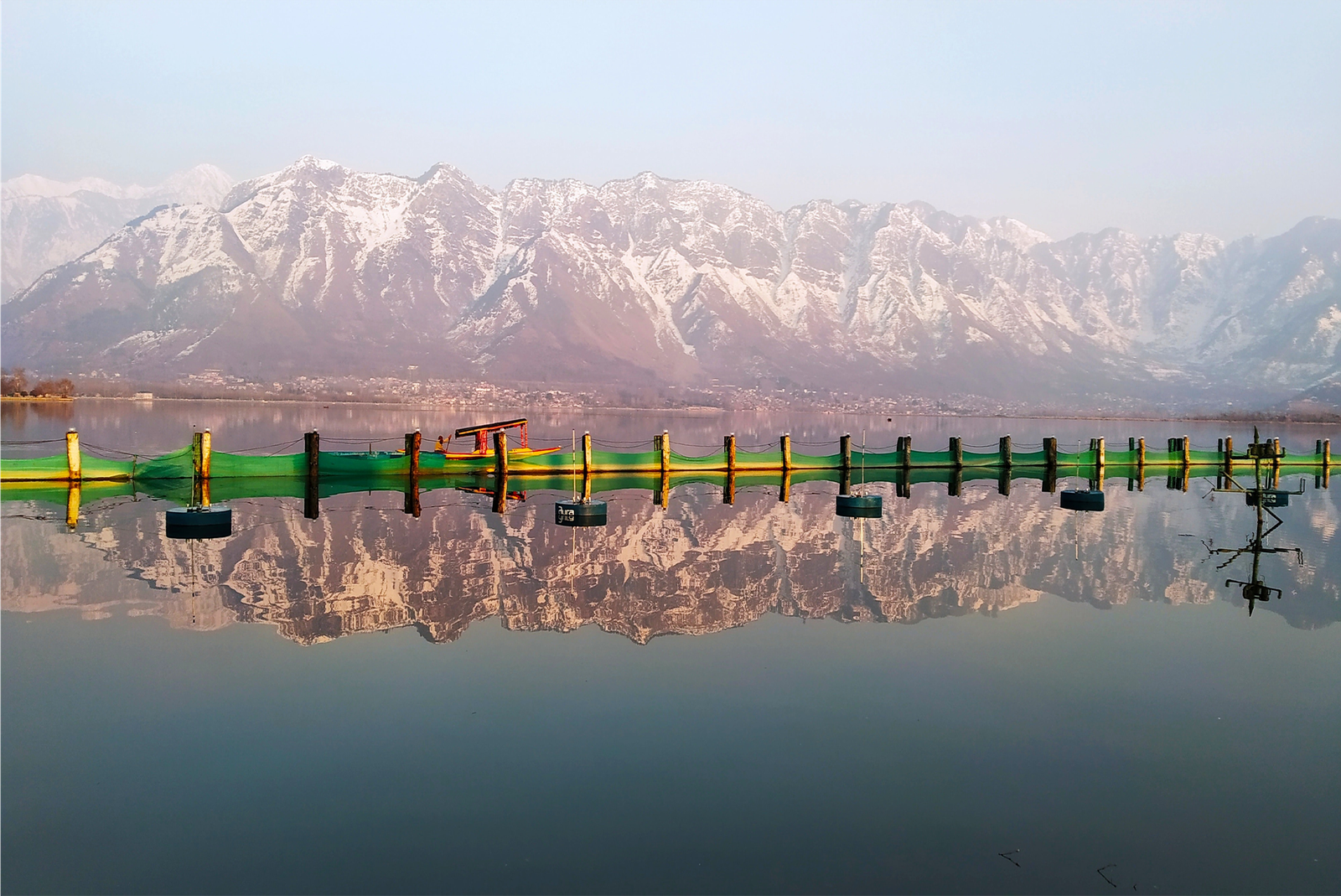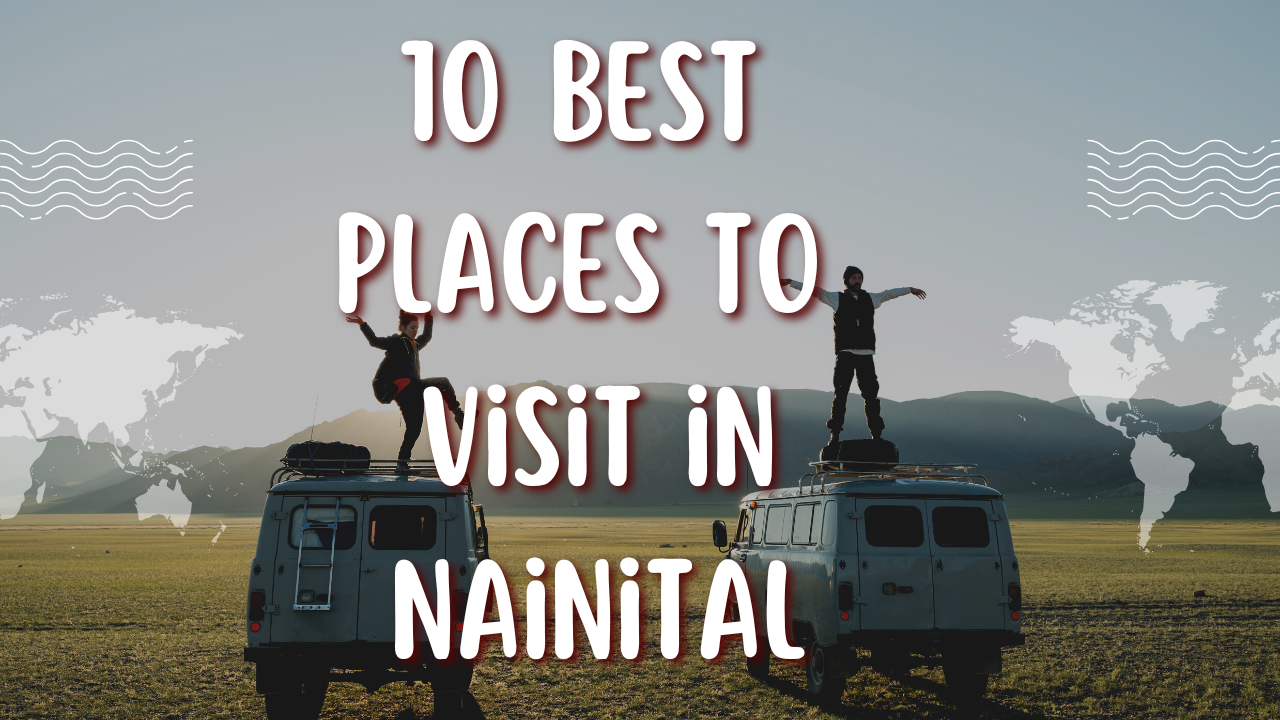21 Best Places to visit in Manali

Manali, with its blend of adventure, spirituality and natural beauty, invites travelers to explore the enchanting landscapes of the Himalayas. Manali offers an experience that goes beyond the typical, whether you’re hiking the snow-covered paths of Rohtang Pass or taking in the peace of historic temples. Manali is a place that will make a lasting impression on your Himalayan travels as you take in the clear mountain air and lively local culture.
Situated among the majestic Himalayas, Manali is an enchanting location that enthralls tourists with its snow-capped peaks, verdant valleys and lively customs. Manali offers activities and attractions for all types of visitors including those who enjoy the outdoors. Let’s explore the 21 Best Places to visit in Manali Himalayan wonderland that promise an unforgettable experience.
Table of Contents
1. Solang Valley
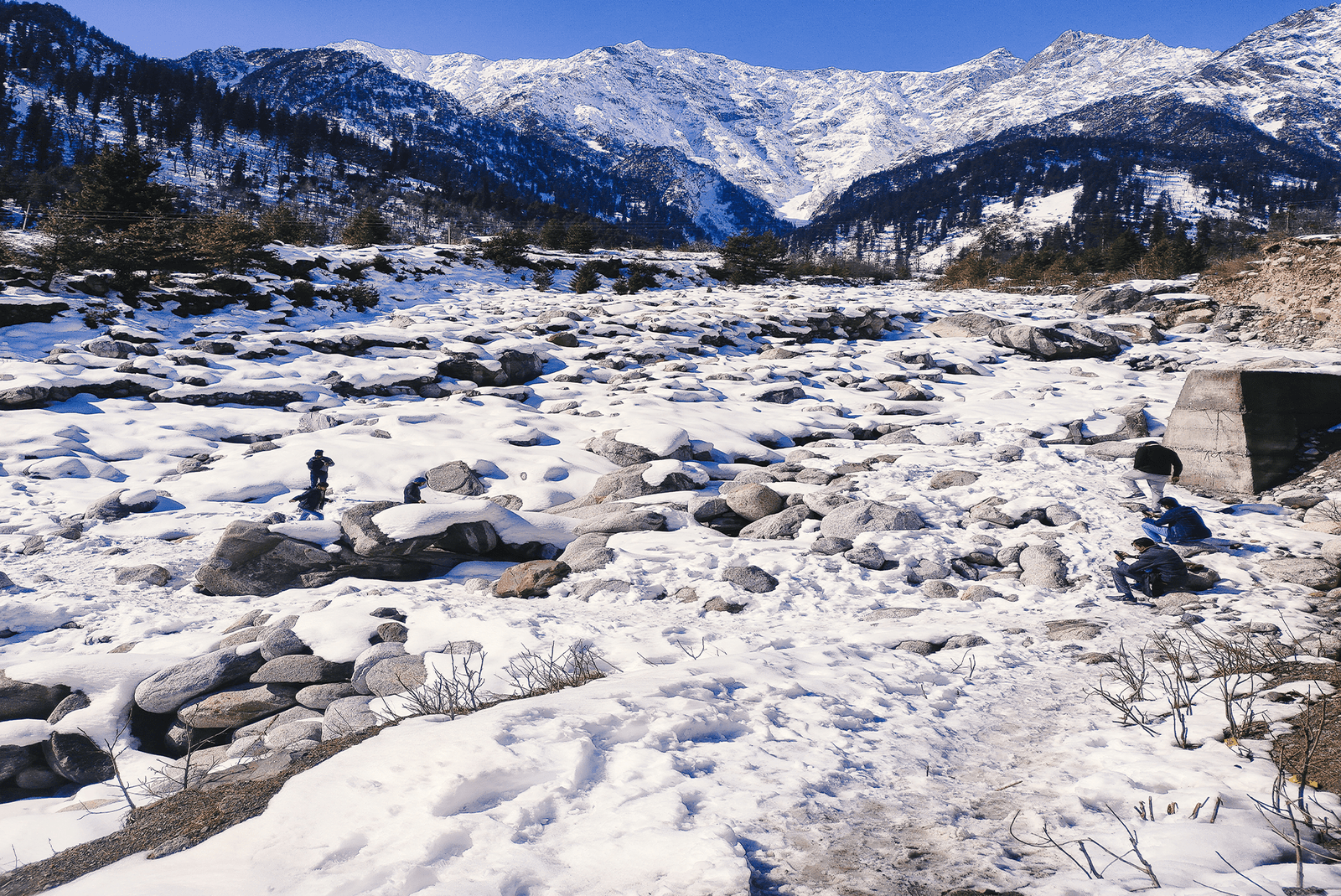
Solang Valley is an adventurer’s paradise and a monument to the grandeur of nature. Solang Valley is a must-visit location for individuals looking for the ideal balance of peace and heart-pounding adventures. It is renowned for its unspoiled beauty and a wide range of exhilarating activities. Solang Valley, also known as Solang Nala, is situated about 14 kilometers northwest of Manali. Towering snow-capped peaks surround the valley, providing a broad perspective of the Himalayas.
Solang Valley is transformed into a mystical, snow-covered wonderland during the winter. Skiing, snowboarding and tubing are just a few of the winter sports available in the snow-covered landscape. Travelers seeking adventure travel to Solang in order to feel the rush of snowboarding down the snow-covered slopes.
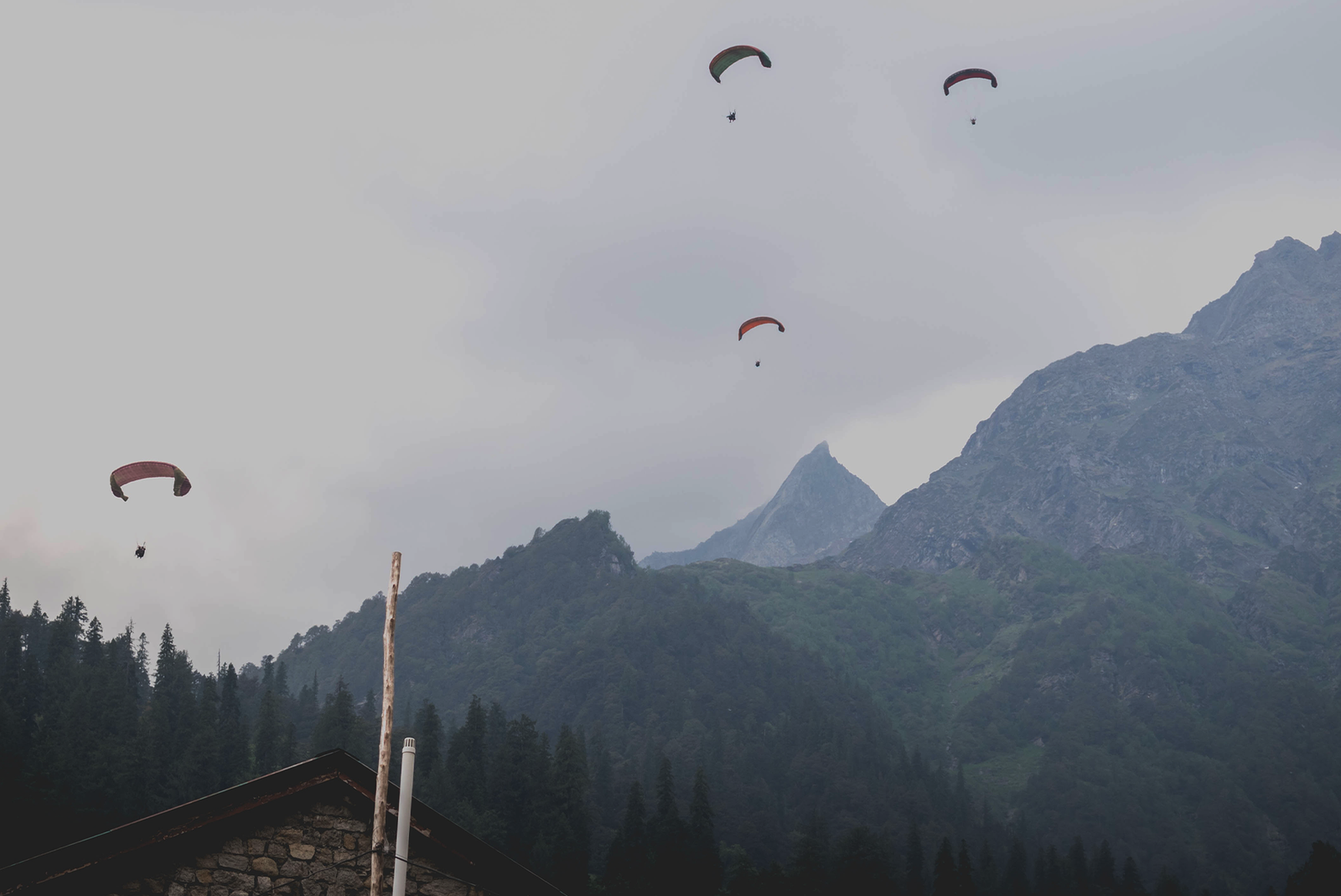
Famous for being a paragliding hotspot, Solang Valley provides the dreamlike thrill of gliding through the air while taking in incredible panoramas below. Experience the exhilaration of paragliding against the majestic Himalayan peaks—a thrilling adventure that appeals to thrill-seekers of all skill levels.
Enjoy a more laid-back yet no less captivating experience by riding the cable cars in Solang Valley. Enjoy the incredible views from the comfort of an enclosed cabin as you take in the ride’s bird’s-eye view of the valley and its surrounds.
Visitors can learn about the thrilling sport of zorbing in Solang Valley. Embark on a hilarious and exhilarating ride down the mild inclines by climbing into a gigantic transparent ball. For families and those seeking a fun adventure, it’s a delightful activity.
Take a ride on the Solang Ropeway to get to the higher areas of Solang Valley. The cable car ride is an attraction in and of itself, offering incredible views of the valley and the surrounding peaks. Enjoy the broad vistas and take in the stunning scenery once you reach the summit.
2. Hidimba Devi Temple

The Hidimba Devi Temple is steeped in mythology, with its origin tied to the Mahabharata. In this calm place, Hidimba, a rakshasi (demoness) with a kind heart, underwent severe punishment. Constructed around the cave where she practiced meditation, the temple honors her generosity and devotion.
Maharaja Bahadur Singh constructed the temple in 1553 and it is a magnificent example of prehistoric architecture. The building is made of stone and wood and its elaborate wooden carvings tell stories from Hindu mythology. The temple’s elaborate wooden doors and roof in the style of a pagoda enhance its visual appeal.
The design of the Hidimba Devi Temple is unique, in contrast to traditional temples. Instead of having an idol of the god inside the temple, Hidimba’s divine presence is symbolized by a footprint on a stone. The simplicity and uniqueness of this holy place frequently provide visitors and devotees with comfort.
Dhungri Mela, held near the temple premises, is another cultural extravaganza that showcases the rich traditions of the region. The vibrant arts and crafts of Himachal Pradesh are available for tourists to enjoy as local artisans and craftsmen showcase their skills.
3. Old Manali

Old Manali exudes an undeniable charm that captivates visitors from the moment they set foot on its cobbled streets. Through colorful prayer flags flapping in the mountain breeze and wooden houses adorned with elaborate carvings, the architecture has elements of the traditional Himachali style.
Old Manali still has the bohemian vibe of the counter-culture movement from the 1960s and 1970s. The laid-back vibe, unique cafes and multicultural population of both locals and visitors all bear witness to the hippie era’s influence.
Old Manali is a paradise for food enthusiasts and those seeking a unique cultural experience. Numerous cafes line the narrow lanes, offering everything from international delicacies to traditional Himachali dishes. Every café has a backstory and offers a window into the creative and free-spirited culture that characterizes Old Manali in addition to delicious food.
The melodious sound of the Manalsu River flowing through Old Manali adds a soothing soundtrack to your exploration. Enjoy a leisurely stroll along the riverbanks while admiring the stunning views of the surrounding mountains and crossing charming bridges.
Discovering Old Manali is a journey unto itself. Discover undiscovered treasures like the Manu Temple, a hallowed location devoted to the wise Manu. The architecture and calm atmosphere of the temple provide an insight into the local spiritual heritage.
4. Manali Sanctuary

The Manali Sanctuary is a haven for wildlife enthusiasts and nature lovers. Hike through thick forests to see brown bears, snow leopards and monals—among the Himalayan’s wildlife. The sanctuary serves as evidence of the biodiversity of the area. The harmony of nature is enhanced by meandering streams and towering deodar and pine trees that form a dense canopy of forest.
The rich biodiversity of the sanctuary is one of its primary draws. Numerous types of plants can be found in the area, such as maple, kail, deodar and horse chestnut trees. A wide variety of animals, such as the elusive snow leopard, brown bear, monal pheasant and Himalayan tahr, can be spotted by wildlife enthusiasts.
The well-maintained walking trails within the sanctuary encourage visitors to discover its many hidden gems. The sweet scent of mountain flowers fills the air as you walk these trails and the sound of rustling leaves follows you like a helpful guide.
Adventurers can also use the sanctuary as a base. Hikers have access to trails that ascend to higher altitudes and provide sweeping views of the neighboring mountains. A little bit of the wild can be added to an adventurous person’s Himalayan experience by camping.
Best Time to Visit: During the spring and summer months (May to June) when the weather is pleasant and the flora is in full bloom. Winter visits, while enchanting, require preparation for snow-covered trails.
5. Naggar Castle

Naggar Castle, perched atop a hill, provides insight into the lengthy history of Himachal Pradesh. The castle is a worthwhile excursion because of its history and expansive views of the Kullu Valley. For a taste of culture, visit the castle’s art gallery.
Naggar Castle, with its distinctive architecture, carries the weight of centuries within its walls. Built more than 500 years ago by Raja Sidh Singh, the castle has an air of antiquity that carries guests back to a time of bravery and grandeur.
The architecture of the castle features elaborate wood and stone carvings and combines Western and Himalayan architectural elements. Through a stunning view of the surrounding mountains, its imposing structure looks down on the valley’s verdant surroundings.
Naggar Castle, strategically located on the left bank of the Beas River, provides sweeping views of the valley. Every visitor is left with a lasting impression that is created by the surrounding orchards, terraced fields and far-off snow-capped peaks.
There is a unique bond between Naggar Castle and the well-known Russian painter and philosopher Nicholas Roerich. Early in the 20th century, Roerich settled in Naggar and his influence can still be felt in the atmosphere of the castle. His masterpieces are on display at the Roerich Gallery inside the castle grounds.
6. Tibetan Monasteries

Manali is dotted with Tibetan monasteries that exude tranquility. Some of the peaceful shrines where you can observe Buddhist ceremonies and take in the serene atmosphere are the Himalayan Nyingmapa Gompa and the Gadhan Thekchhokling Gompa.
Tibetan monasteries are silent reminders of a rich spiritual legacy that dates back many centuries. Beyond their architectural designs these hallowed places serve as doors to a realm of peace, devotion and age-old knowledge.
Every monastery is an exquisite example of Tibetan building design. These buildings are characterized by elaborate murals, colorful prayer flags waving in the breeze and exquisitely carved prayer wheels. Every nook and cranny is filled with profound spiritual symbolism, which is reflected in the design.
Observing the day-to-day activities of monks and nuns offers an insight into the orderly and reflective lives they lead. A symphony of dedication and devotion, the monastic routine consists of prayers in the early morning and evening.
The Potala Palace in Lhasa, once the winter residence of the Dalai Lama, is a towering symbol of Tibetan Buddhism. It is not your usual monastery, but it has great spiritual significance and provides insight into the illustrious past of Tibetan emperors.
7. Jogini Falls

A short trek from Vashisht Temple leads you to the mesmerizing Jogini Falls. Surrounded by lush greenery, the cascade is the ideal location for a peaceful picnic and a cool dip in the mountain waters.
Adventurers looking for a break from the norm are drawn to Jogini Falls, which is situated away from the busy town of Manali. The trip to the falls is an adventure in and of itself, winding through verdant foliage, pines whispering and the occasional rustle of leaves.
The sound of distant water gradually builds to a crescendo as you get closer to the falls, signaling the magnificent sight of Jogini’s cascades. A captivating scene is created by the falls, which are encircled by emerald foliage and framed by rocks covered in moss.
8. Beas Kund

Beas Kund is a trekking haven for serious hikers. The trek leads to the holy Beas Kund, the snow-capped peaks that surround the source of the Beas River. The trip offers amazing views of the Dhauladhar Range and is just as rewarding as the destination itself.
Beas Kund is not just a lake; it’s the birthplace of the Beas River, one of the major rivers in northern India. It has great spiritual significance because, according to Hindu mythology, this glacial lake is where Sage Vyas performed his daily ablutions.
The journey to Beas Kund, which passes through verdant meadows, deep forests and moments adorned with vibrant mountain flowers, is considered a gateway to the gods. It’s a pilgrimage through the majesty of nature, not just a walk.
Beas Kund shoreline camping is an experience unlike any other. Witness the magic of a starry night in the Himalayas as the pristine mountain sky turns into a celestial masterpiece as night falls.
Best Time to Visit: During the summer months, the best time to visit Beas Kund is from late June to September. During this period, the weather is relatively mild, and the trekking trail is adorned with a riot of colorful flowers.
9. Manu Temple
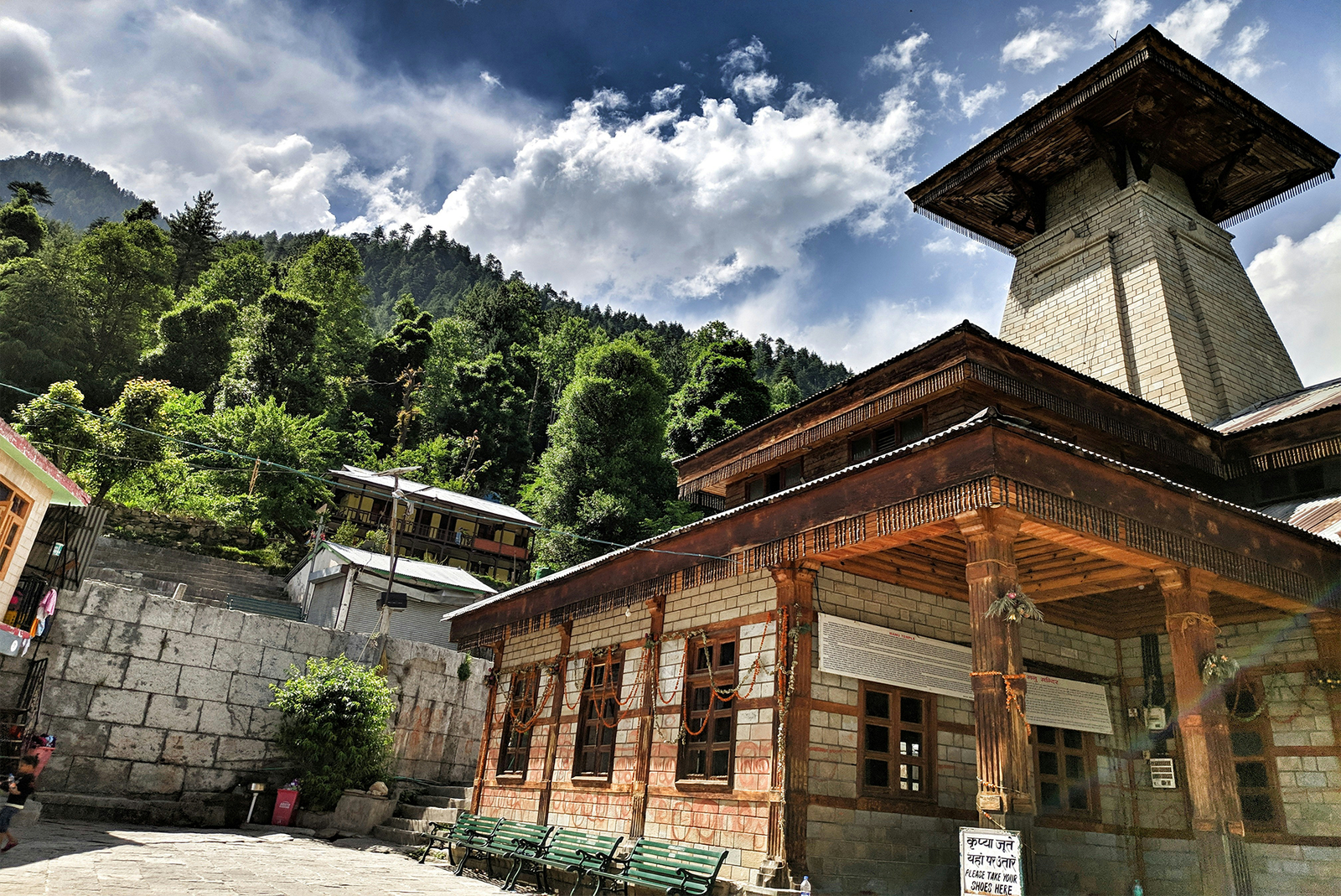
Situated on the banks of the Beas River, Manu Temple is devoted to the sage Manu, the mythical ancestor of humanity. Both devotees and history buffs are drawn to the temple by its peaceful surroundings and distinctive architecture.
According to mythologies, Manu, the Hindu mythological ancestor and father of humanity, meditated here after emerging victorious from a disastrous flood. The Manu Temple honors the ancient sage who is regarded as the lawgiver of the Hindu tradition. It is thought to be the only temple of its kind in the world.
The Manu Temple, which was constructed using traditional Himachali architecture, is incredible. The elaborate wooden carvings and unique Himachali craftsmanship adorning the pagoda-style building are an evidence to the region’s rich cultural heritage.
The Manu Temple is conveniently located in Old Manali and can be reached from the main market. The journey is made more charming by a brief walk through traditional Himachali houses lining narrow lanes.
10. Rohtang Pass

Rohtang Pass, perched at an elevation of 3,978 meters, is the gateway to the Spiti and Lahaul Valleys. This pass, which is open in the summer, provides incredible views of mountains covered in snow. Play in the snow and remember to take pictures of the beautiful surroundings.
Rohtang Pass, also known as the “pile of corpses,” gets its name from the difficult topography and erratic weather. Beyond its intimidating moniker, though, is a haven for anyone looking for incredible views of the Great Himalayas and the Pir Panjal.
Rohtang Pass is synonymous with opportunities for adrenaline-pumping activities. Numerous adventure sports, such as skiing, snowboarding, paragliding and mountain biking, are accessible from the pass. In winter, the snow-covered slopes become a refuge for winter sports, drawing visitors from all over the world.
One of the highest motorable roads in the world, the Manali-Leh Highway, passes through the vital Rohtang Pass and gives access to the Leh region of Ladakh. Traveling this highway offers amazing views and a glimpse into the distinct culture of the Himalayan regions, making the trip an adventure in and of itself.
11. Van Vihar National Park

Van Vihar National Park, situated on the banks of the Beas River, welcomes visitors with open arms into its lush embrace. Towering deodar trees, colorful flowerbeds and well-kept walking paths make the park, which acts as Manali’s “green lung,” a cool haven.
Despite its small dimensions, the park is home to a wide variety of plants and animals. The sound of birdsong makes for a charming background while you stroll through the park. Among the foliage, nature lovers will enjoy spotting a variety of bird species.
Van Vihar features a small pond where visitors can indulge in paddle boating. Flying over the crystal-clear waters while taking in the incredible views of the park lends an air of romance and adventure to the experience.
Van Vihar National Park serves as a center for environmental awareness and education in addition to being a recreational area. Within the park, information panels and signboards encourage visitors to appreciate and support conservation efforts by offering insights into the local ecosystem.
12. Paragliding in Manali
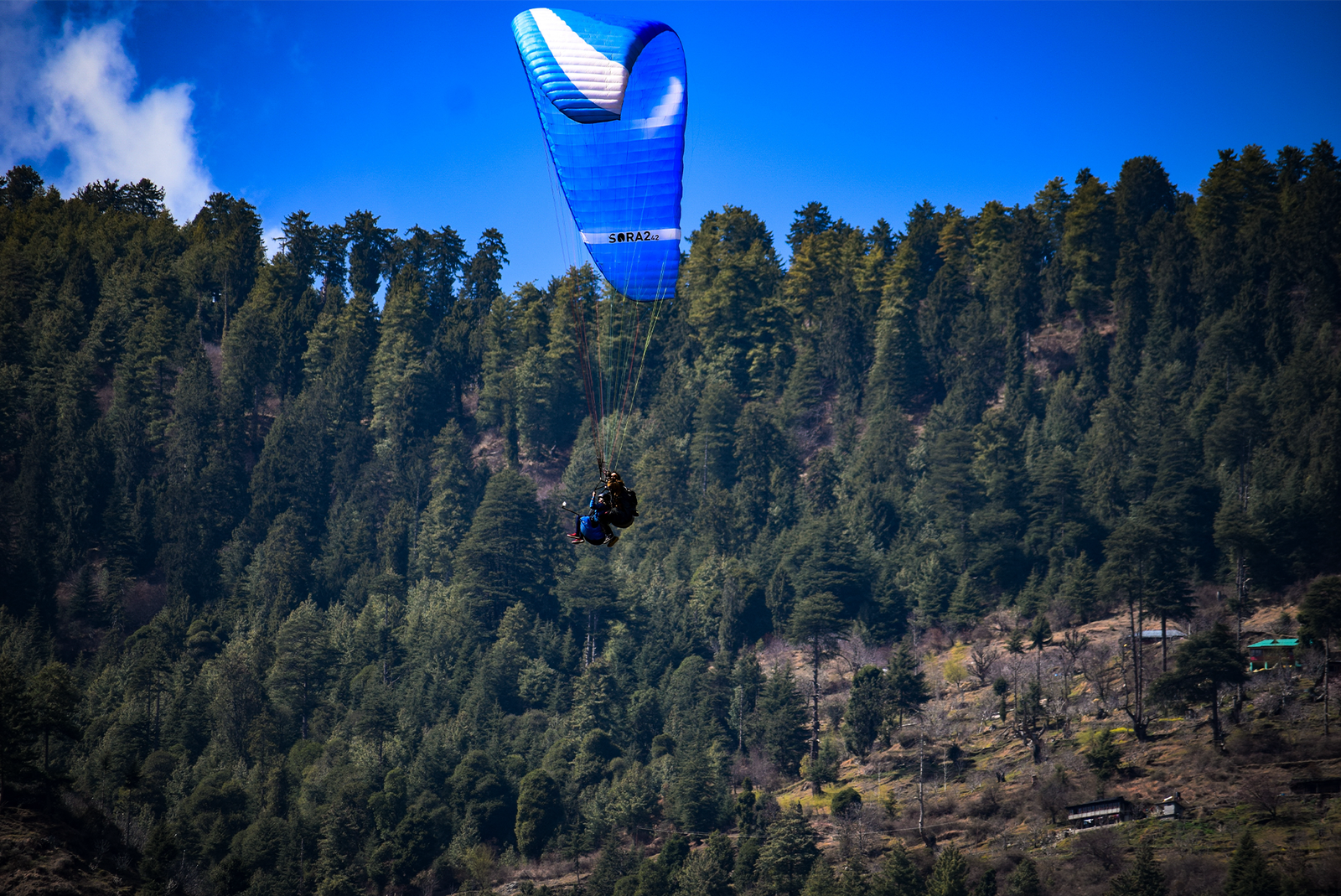
Solang Valley, located just 14 kilometers from Manali, is the epicenter of paragliding activities in the region. Famous for its unspoiled beauty, this charming valley is transformed into an adventurer’s paradise during the paragliding season. While paragliding in Manali is a year-round activity, the best time to experience this exhilarating adventure is from May to September. Sunny weather and moderate wind are present during these months, which are ideal for paragliding because they provide the conditions needed for a safe and enjoyable experience.
For those new to paragliding, tandem flights offer a perfect introduction. Tandem paragliding gives you the chance to enjoy the rush of taking to the sky with an experienced and certified pilot by your side—all without requiring you to undergo lengthy training. Anybody can embark on this adventure, regardless of age or experience level.
Beautiful views of the Beas River and the surrounding mountains can be seen from the take-off point in Solang Valley. The paraglider catches the wind as you and your pilot run together and before you know it, you’re in the air. As you rise into the wide open sky, you experience a rush of both excitement and amazed.
13. Sethan Valley

Sethan Valley in Himachal Pradesh, close to Manali, provides a getaway from the busy tourist areas. The valley is reachable via an amazing drive and because it’s off the usual route, tourists can avoid the crowds and have a more genuine Himalayan experience here.
Sethan Valley is a peaceful haven, but it’s also a starting point for adventures. Trekking trails in the area are well-known and give enthusiasts the chance to explore the nearby mountains. The hiking routes range in difficulty to suit the needs of both experienced hikers and those looking for a more relaxed stroll.
The well-known Hampta Pass hike starts in Sethan Valley. This trek is a spiritual experience as well as a physical one. Trekkers frequently enjoy peaceful moments of reflection and introspection while crossing the Hampta Pass, which is surrounded by majestic surroundings and high peaks.
A distinctive feature of Sethan Valley is the chance to immerse oneself in the local way of life through homestays. The genuine insight into mountain life is offered by the friendly hospitality of the locals. It’s common for guests to be invited into traditional homes, enjoy regional cuisine and take part in cross-cultural interactions.
14. Kullu

Kullu-Manali, embraced by lush greenery and snow-capped peaks, is a visual symphony. Azure skies are reflected by the Beas River as it meanders through the valleys, enhancing the beautiful landscape with apple orchards and deodar forests. At every bend, a picture-perfect scene that looks like it belongs in a dream is revealed.
Conversely, Kullu provides a peaceful haven with its traditional Himachali villages and serene landscapes. The town is a center of culture as well as a natural wonder. During lively celebrations like Dussehra, the entire valley comes alive with color, music and dance.
Manikaran, which is close to Kullu, is well-known for its therapeutic hot springs. Travelers and pilgrims alike come to the Manikaran Gurudwara to soak in these natural hot springs in search of both physical and spiritual rebirth.
The Great Himalayan National Park, which is close to Kullu, is a haven for those who enjoy the outdoors. Through its mountain meadows, thick forests and variety of wildlife, this UNESCO World Heritage Site offers hikers a fully immersive experience in the amazing beauty of nature.
15. Sajla Waterfall
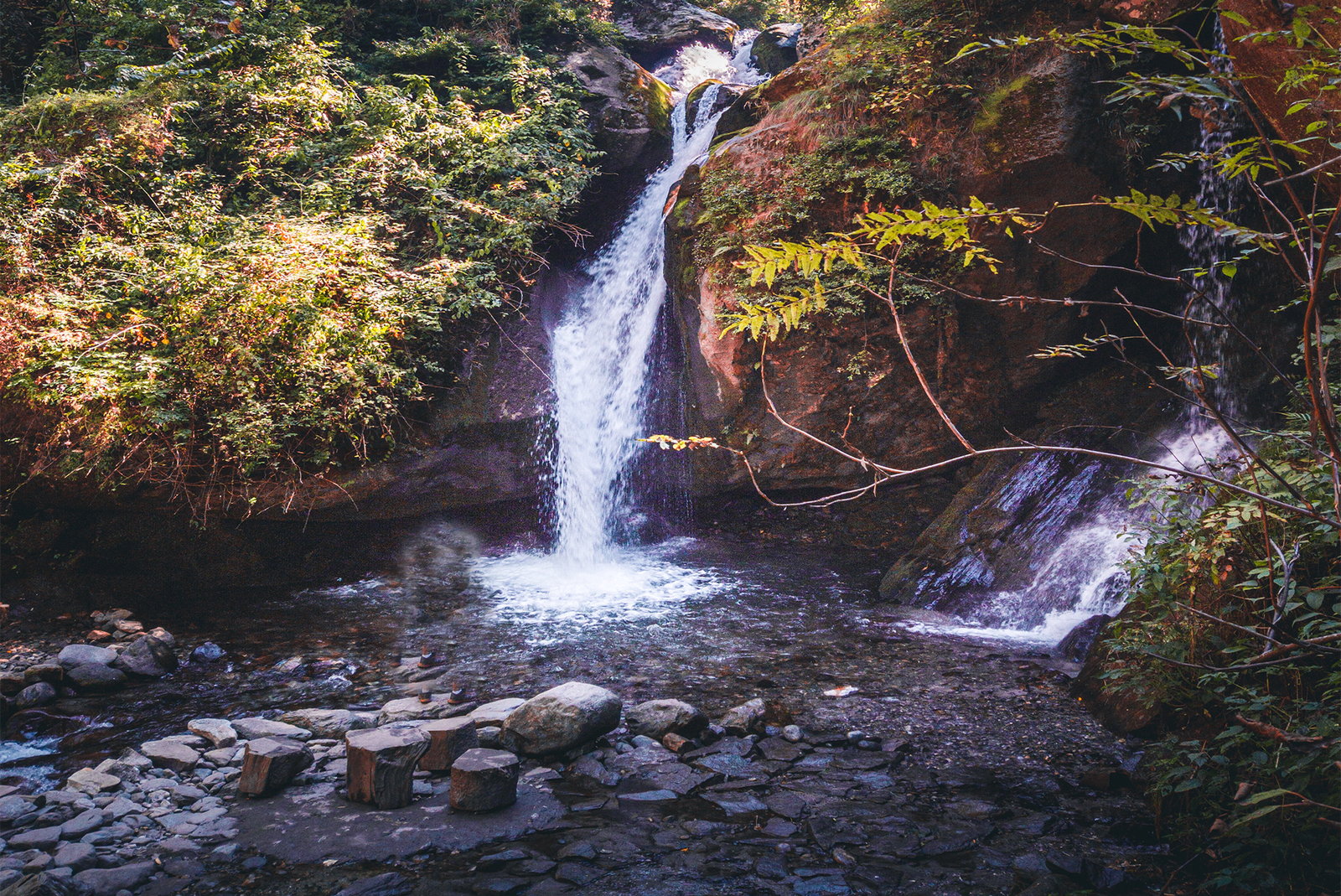
Sajla Waterfall, a well-kept secret of nature, is nestled amidst dense forests and rolling hills. Reaching the waterfall, which is accessible via a hike that meanders through the abundance of nature, is like entering a pristine oasis where the only sounds are the sound of running water and the rustle of leaves.
The journey to Sajla Waterfall is an adventure in itself. You’ll come across the area’s rich biodiversity as you walk along. Trekkers can enjoy views of the native flora and fauna that flourish in this pristine ecosystem, as well as a harmonious blend of challenge and wonder throughout the journey.
Sajla Waterfall undergoes a transformation with the changing seasons. The waterfall is most beautiful during the monsoon season, when it cascades down with renewed energy. For those who value the subdued beauty of the colder months, the surroundings are adorned with a serene stillness during the winter, creating a different kind of magic.
Sajla Waterfall invites those with an adventurous spirit to discover its mysteries with its unspoiled charm and remote grandeur. It’s more than just a place to go; it’s an adventure into the heart of the wilderness, where the sound of falling water and wind whispers are nature’s serenade.
16. Jana Waterfall

Jana Waterfall is a hidden gem nestled amidst the lush greenery of the mountains. Reached via a path that meanders through hills with curves and pine forests, getting to the waterfall is an adventure in and of itself. The trail promises a rewarding spectacle at the end, and the anticipation grows as you travel along the beautiful path.
A wide range of locally native plants and animals adorn the trail. The journey is enhanced by a symphony of vibrant wildflowers, chirping birds and the refreshing mountain air, making the journey itself as enjoyable as the destination.
When visitors first arrive at Jana Waterfall, they are amazed by the untamed beauty of the place. There’s a calm pool at the bottom where the glistening waters trickle down the rocks. A peaceful natural orchestra is created by the sound of cascading water, rustling leaves and distant bird calls.
Jana Waterfall can be connected with customs and culture from the area. Talking with the locals reveals the legends and customs surrounding this natural marvel. The native stories expand the overall experience by introducing guests to the region’s rich cultural heritage.
17. The Great Himalayan National Park

The Himalayan National Park, which stretches over acres of rolling terrain, is a living gallery filled with a wide variety of plant and animal species. The ecosystem that is supported by alpine meadows, coniferous forests and meandering rivers is home to elusive animals like the snow leopard, the Himalayan tahr and the colorful Western Tragopan.
Some of the rarest and most endangered species on the planet find sanctuary in the park. The ‘Ghost of the Himalayas,’ the snow leopard, is a sought-after sighting for animal lovers. In addition, the park is home to a variety of pheasants, blue sheep and the Himalayan brown bear, which makes it a hotspot for biodiversity.
Some of the most captivating trekking routes in the Himalayas can be accessed from the park. Trails like the Great Himalayan National Park Trek provide an opportunity to hike through old forests, cross pure rivers and camp under the starry Himalayan sky, regardless of experience level.
It is recommended that visitors to the Himalayan National Park adopt responsible tourism practices. Ensuring that the pristine splendor of this Himalayan sanctuary is preserved for future generations is contingent upon minimizing the ecological footprint, honoring local customs and complying with park regulations.
18. Parvati Valley

As you traverse the winding roads leading to Parvati Valley, the cacophony of city life fades away, replaced by the melody of gushing rivers and rustling leaves. The valley is a doorway to peace, beckoning you to step away from the everyday and take in the quiet of the mountains.
The Parvati Valley is rich in spirituality and mythology. The valley is named for the Parvati River, which is thought to be Lord Shiva’s consort. Often visited by pilgrims and seekers, Manikaran Sahib and the famous Manikaran Hot Springs are ancient temples where spiritual energies are felt and legends come to life.
Parvati Valley has earned a reputation as a hippie haven, attracting free spirits and backpackers from around the world. The bohemian-infused villages of Kasol, Tosh and Malana offer a melting pot of art, music and cultures. Parvati is most enjoyable in its relaxed atmosphere, lively markets and cafes with a view.
19. Manikaran

Manikaran’s natural hot springs are among its most well-known attractions. These geothermal marvels, surrounded by unspoiled beauty, provide a calming haven for those looking to unwind and heal. In addition to enjoying the peaceful atmosphere of the surrounding mountains, visitors can swim in the thermal waters, which are thought to have healing qualities.
Manikaran holds immense religious importance for both Sikhs and Hindus. Sikhs consider the town’s Manikaran Sahib Gurudwara to be a sacred place. The founder of Sikhism, Guru Nanak Dev Ji, is said to have worked miracles here. The town’s multicultural and spiritual fabric is further enhanced by the presence of historic Hindu temples devoted to Lord Shiva and Lord Ram.
Manikaran is the starting point for difficult treks and expeditions in the Parvati Valley, catering to adventure seekers. In addition to providing physical challenges, the trails that lead to Kheerganga and Malana are very well-liked views of dense forests and mountain pastures.
20. Malana
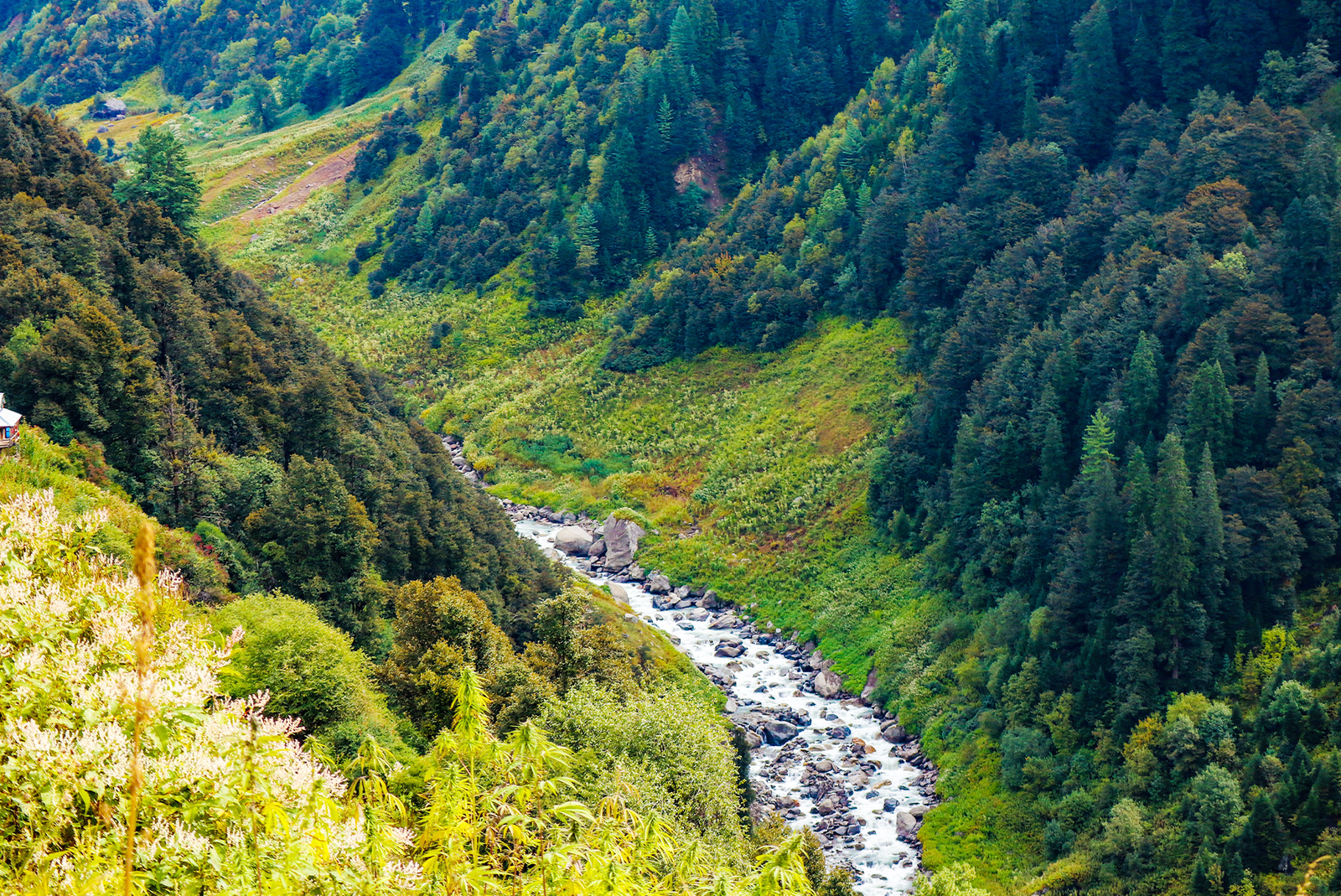
Mysterious in its past, Malana’s democracy is thought to be among the oldest in the world. The people who live there, called Malanis, are very proud of their unique cultural identity and the long-standing democratic customs that have been passed down through the ages.
Beyond its cultural significance, Malana became well-known worldwide for cultivating the cannabis strain known as Malana Cream. Although the village’s customs revolve around the cultivation and consumption of cannabis, visitors are urged to observe local laws and customs.
Malana is the starting point for adventurers wanting to hike Chanderkhani Pass. The trail offers hikers an immersive experience in the middle of nature as it passes through dense forests, mountain grasslands and expansive views of the Himalayas.
21. Chanderkhani pass
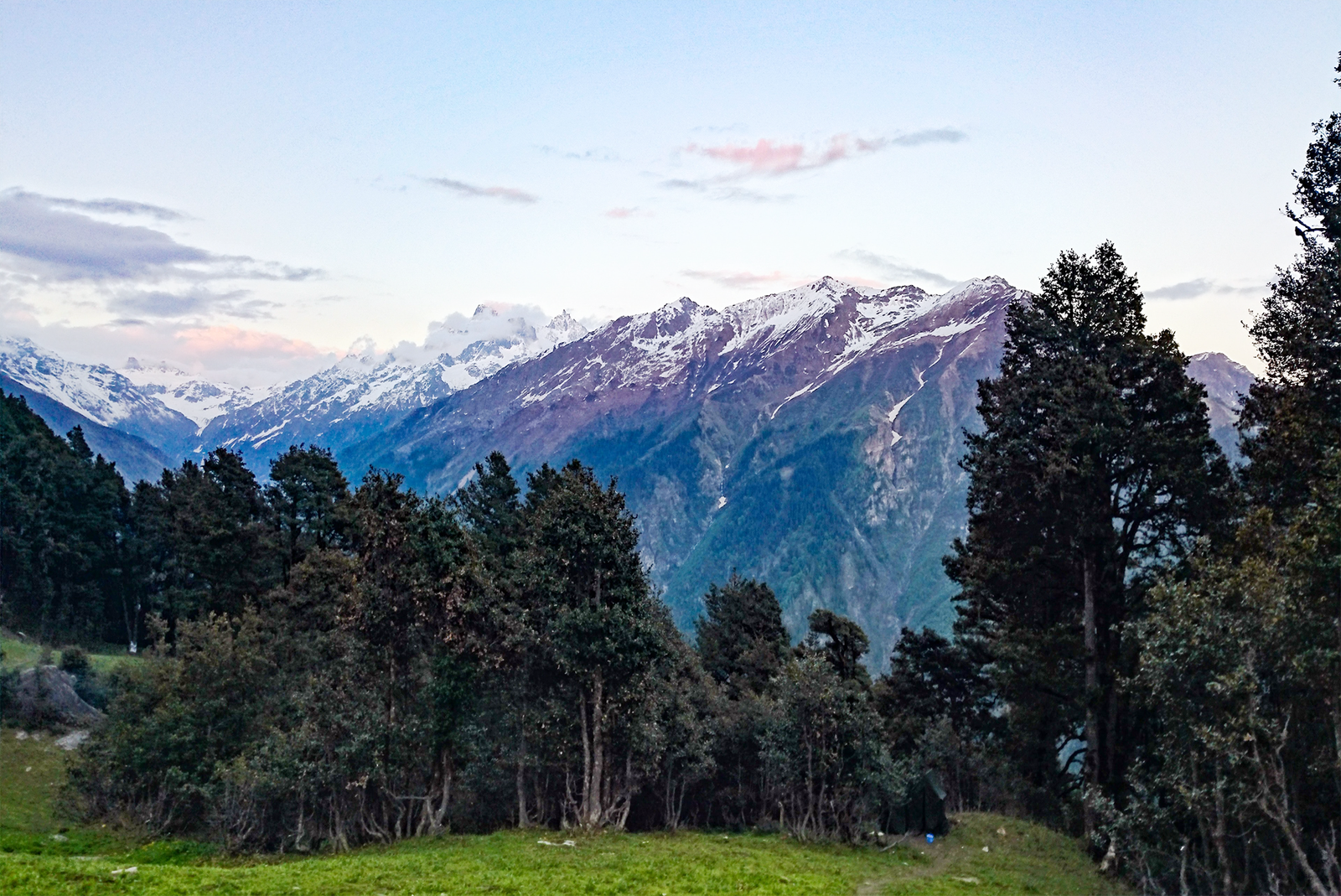
Starting in the quaint village of Naggar, the Chanderkhani Pass trek takes hikers through picturesque meadows, dense forests and small villages. Every step on the trail is an adventure as it opens up to a panorama of snow-capped peaks.
A full 360-degree view of the surrounding mountains, including the majestic peaks of Deo Tibba, Pir Panjal and the Parvati Range, is afforded to trekkers. The landscape’s constantly shifting colors, which range from vibrant greens to immaculate whites, produce a sight that is unforgettable.
A common stop on the Chanderkhani Pass trek is the haunting village of Malana. Trekking becomes even more fascinating when you take into account Malana’s historic traditions, distinctive architecture and invisible atmosphere.


